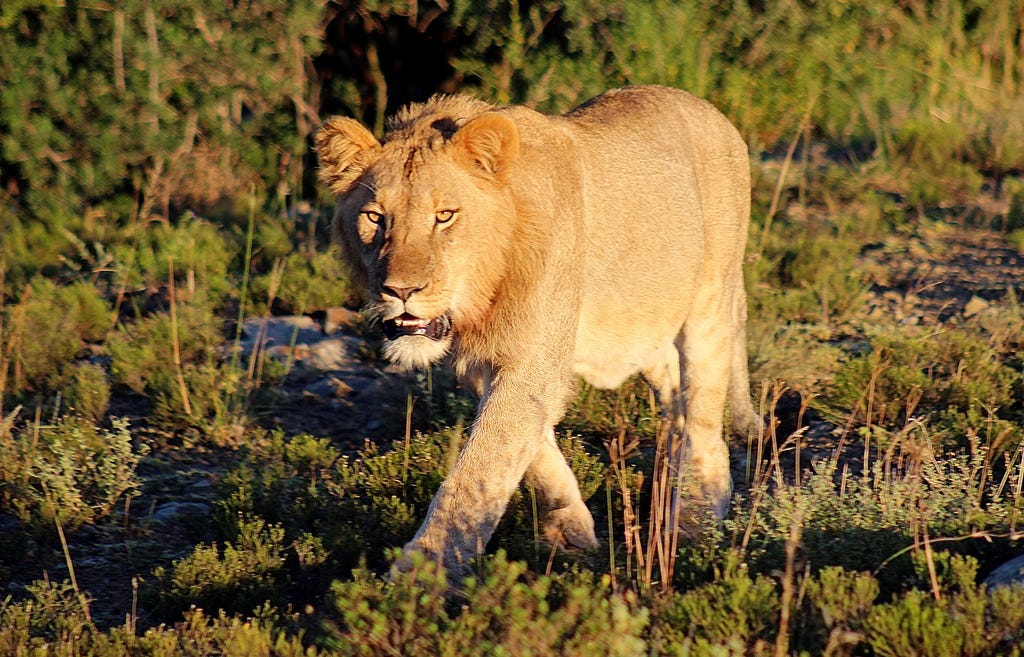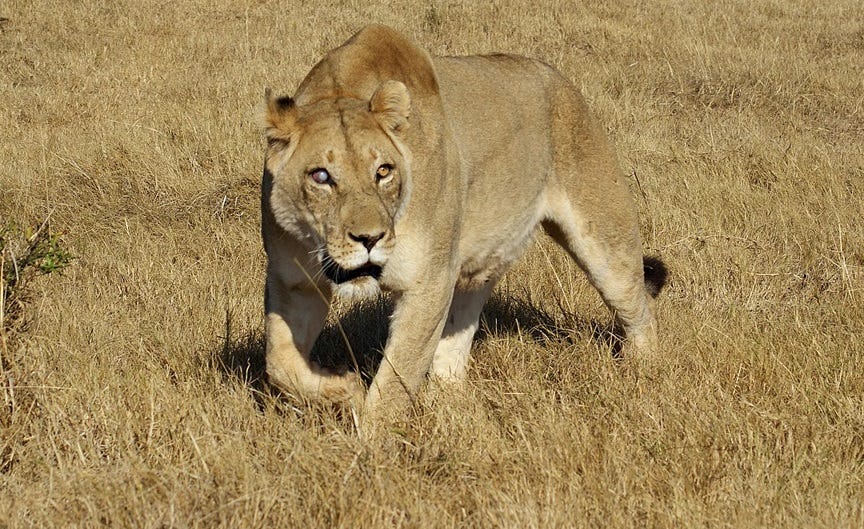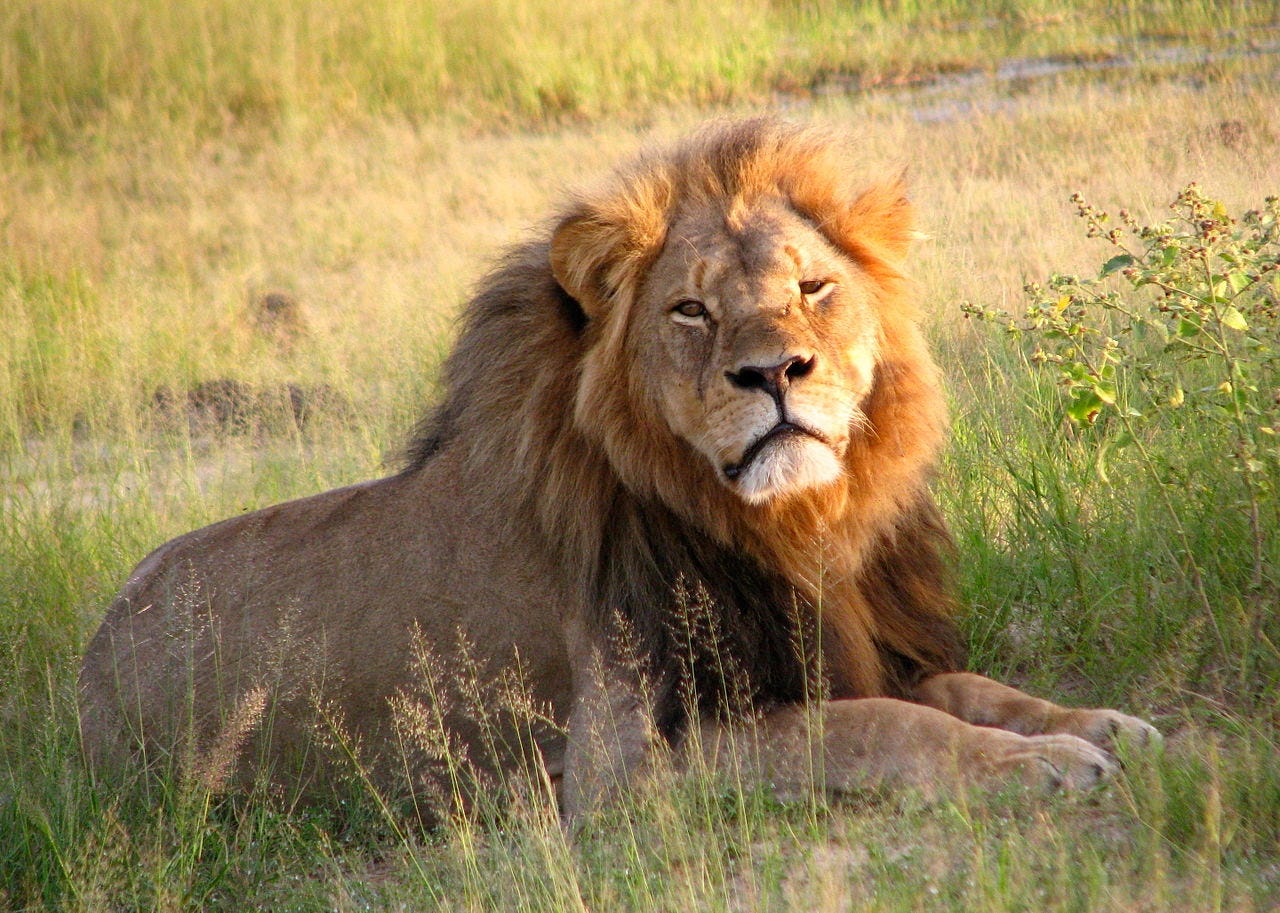
Should wild animals be given names? This question was the focus of much activity on social media recently. It was sparked by an innocent enough exchange when someone spotted three lions close to the fence of the Nyathi section of the Addo Elephant Park (AEP) and wanted to know their names.
To get to the crux of the matter, allow me to provide some context so readers not familiar with the situation can understand how to name or not to name became an issue.
First of all, the AEP is a large park with a number of fenced off sections. Visitors cannot go from one section to another without relevant permissions. Most visitors, myself included, usually go to the Main Section (24,000 hectares) where we can observe about 600 elephants, a variety of antelope, hyenas, jackals and currently, five lions.
Visitors can only go to the Nyathi section (14,000 hectares) if you are booked in for an overnight stay at the Nyathi camp. The species of animals seen in this part of the AEP are more or less the same as the Main Section.
A regional road (R342), a railway line and a fence on either side of the road separate the Main Section from the Nyathi section. This means that quite often you can spot a variety of game while driving from one town to another.
A few weeks ago, someone spotted three lions close to the fence in the Nyathi Section and put out a question and some photographs on social media asking about the names of the three.
The reply was interesting.
The older lioness, a massive female believed to weigh as much as 250kgs, is known as Jess. She is about 14 years old – quite old for a lion but she appears to be in superb condition.

The other two, a male and female born to Jess in July 2019, do not have names because park management has decided not to give names to lions anymore.
The reason given for this decision is that management does not want a repeat of the outcry that followed the translocation of Jack.
When Jack, the handsomest lion in all the land, was extricated from the AEP and taken to the Shamwari Private Reserve in June 2021, regular Addo Addicts were upset. Jack was very popular because he was extraordinarily good looking and had recently lost both his mother, Aardlam, and his sister, Jill in two separate incidents.
We admired him for his courage, we felt sorry for him because of his losses and because he lived all alone. At the same time, we feared that he might be attacked and possibly killed by the two dominant males in the Main Section, Witwarm and Niklaas.
Management’s decision to translocate Jack was sensible. Nobody wanted a bloody confrontation between him and the other two males, but the move caused a loud outcry on social media.
People behind the protests understood the need for the move, but we lamented his loss and were upset that we were not forewarned about it. The sense of loss was exacerbated by the fact that he was translocated to Shamwari, a very expensive destination that is way out of the price range of the majority of South Africans.
Staff at Shamwari are taking good care of Jack but they refuse to use his name and instead refer to him as ‘the nomad lion’. They monitor him regularly and post video footage on social media. Although at the time of writing he has not joined any of their prides, he appears to be doing well.
The outcry was not caused by the fact that Jack had a name. It was a result of the lack of communication between park management and its most loyal visitors.
It could be argued that management has no obligation to account to visitors about how they do their job, but then maybe they do.

Of course, the real question is ‘What is the purpose of the nation’s game reserves’?
Why has government put SANParks in charge of running 19 large game reserves around the country? Why do they exist?
Are they simply tourist destinations – magnets to attract local and foreign tourists? Are they there simply as money spinners?
Are they set up for research purposes where students and scientists can learn more about wildlife?
Do they exist mainly for conservation purposes, as custodians protecting the environment for future generations?
The answer is of course, all of the above and perhaps even more. Park management has a responsibility to ensure that ecosystems are protected for the future, for research purposes and to attract tourists. It is a massive set of responsibilities and park staff are to be commended for the incredible effort they put in to make it all work. They do extraordinary work with limited resources.
The problem is that SANParks officials can’t do it all by themselves. They make use of honorary rangers who volunteer services on a regular basis and researchers from universities who provide valuable data essential to wildlife management.
One of the best sources of support for SANParks is the large number of regular visitors – in the case of the AEP, the Addo Addicts. Happy visitors tell friends and family and so attract more visitors (and foreign exchange) to the reserves. Loyal and happy visitors can also provide useful information about animal numbers and movements for researchers. Finally, regular visitors can help ensure that the environment is protected and well maintained.
The decision not to give names to lions appears to be aimed at preventing visitors from getting too attached to specific animals and thus causing an uproar if they have to be moved. This seems counter-productive – why would you want loyal visitors to be less interested in your animals?
Of course, lions are not pets, but people cannot help but forming a bond with certain animals. When they develop a deeper attachment, they are more likely to assist in wildlife conservation.
As examples: Sylvester the Lion became so popular when he escaped from the Mountain Zebra Park that he was front page news around the country for weeks. Books have been written about him and he has his own Facebook page. People loved his story and were prepared to pay for it.

Cecil the Lion is another story about how people in several countries felt strongly about the dentist who killed him (using a compound bow) and so raised considerable funds for wildlife protection. Wikipedia has a lengthy page about Cecil the Lion whose death arguably changed the US government’s position on trophy hunting.
A further example of naming lions brought national notoriety to the six Mapogo lions: Makhulu, Rasta, Pretty Boy, Kinky Tail, Scar and Mr T. This coalition of males is reputed to have killed more than 40 lions in the Sabi Sands parks of Mpumalanga Province. Their methods were cruel and they wreaked havoc wherever they went.
The 16-year rise and fall of the Mapogos was made into a documentary film - Brothers in Blood: The Lions of Sabi Sand that aired as an eight-episode series on Animal Planet.
The television channel, that streams live game drives from parks in South Africa and Kenya, uses names to identify, lions, leopards and even hyenas. People watch this channel because they want to know what has happened to their favourite predators.
It seems that people develop an affinity with predators more easily than with their prey and this leads to a tendency to name them, but there are exceptions – names are sometimes selected for very large elephants.
In the AEP, the biggest elephant bulls have had names. In addition, researchers have given names to whole lineages of elephants identifying each family with names that start with the same letter.
In Kwandwe and many other private reserves, rangers often informally given names to animals that stand out – and this could include leopards, lions and even rhinos.
The point I am trying to make is that it is human nature to give names to animals that arouse some kind of sentiment, and if the park management decides not to give names to their lions, there is nothing stopping visitors from informally choosing what names to give to which animals.
Perhaps park officials, and particularly the communications department, should make a greater effort at making their management decisions in a more transparent manner.
You have just read my opinion on naming wild animals – what is your view? Do you agree with the practice, or should we just refer to our favourite animals by anonymous category numbers?
Share your views on this subject in the comments section below and encourage your friends to subscribe to the Real Safari Newsletter.





Just wondering who paid the costs of translocating the nomad lion to Shamwari Private Reserve? Also, did they pay anything to Addo or SANparks to acquire such a photogenic animal.